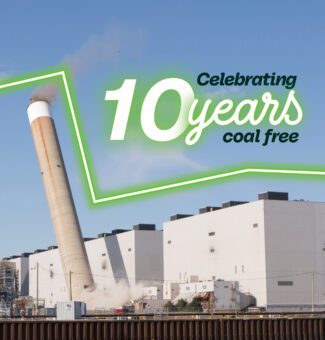OPG goes 3D: Innovative virtual scans of generating stations paying major dividends
At a glance
- OPG’s dedicated 3D laser scanning team captures highly accurate and detailed virtual images of the company’s generating fleet.
- Over six years, the team has scanned more than 200 locations, providing renderings of plant interiors.
- Innovative program has led to improved planning, increased safety, and industry acclaim.
What began as a digital pilot project in 2017 has now morphed into an integral part of OPG’s operations and its future.
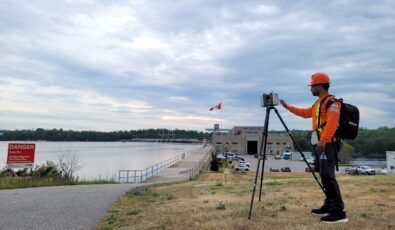
Over the last six years, 3D laser scanning and modelling has been used at OPG’s generating stations across Ontario to safely capture highly accurate and detailed virtual 3D data and images of the company’s generating fleet.
The benefits of this game-changing innovation have been widespread.
Workers have been able to use the 3D images of each station to better plan for any modifications to the plant as well as aid in maintenance, engineering, and general operations. This has resulted in significant planning efficiencies while increasing employee safety through reduced radiation dose and exposure to hazardous environments.
It has also allowed OPG workers to take “virtual tours” of hydro stations located in remote locations of the province, helping them become familiar with these facilities without taking a long and costly trip.
By embracing this innovative technology and leveraging the expertise of our own employees, OPG has demonstrated our commitment to staying at the forefront of technological advancements.Dax PatelFirst Line Manager at OPG
Staying at the forefront of innovation
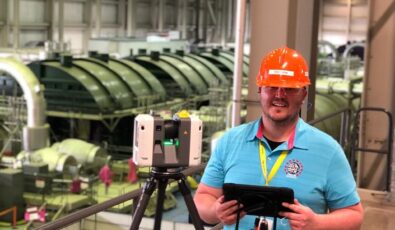
“By embracing this innovative technology and leveraging the expertise of our own employees, OPG has demonstrated our commitment to staying at the forefront of technological advancements,” said Dax Patel, a First Line Manager at OPG and one of the leaders behind the program. “The success and continued development of the 3D Laser Scanning and Modelling Strategy continues to enhance our operations and optimize resources throughout our various facilities.”
Patel helped launch the initiative back in 2017, when OPG first tapped into 3D laser scanning technology to help plan for the installation of a scaffolding replacement at the Emergency Service Water pumphouse at the Darlington Nuclear Generating Station (GS).
After the successful pilot project, OPG established a dedicated department for 3D scanning in 2018. The department now has a team of eight employees.
Over six years, the team has completed scans at more than 200 locations, including at Darlington and Pickering Nuclear GS, as well as several hydroelectric sites across Ontario, the company’s Nuclear Sustainability Services facilities in Bruce County, and various office locations. Each scan can range from a single room to an entire area like a nuclear vault or a turbine generating floor.
How the technology works
To capture these locations, the 3D laser scanning team uses cameras that use lasers to take in two million points per second, resulting in crisp, high-quality scans rich in detail and ready for use in a range of applications. Through multiple scans, millions of data points are collected over days, or sometimes weeks.
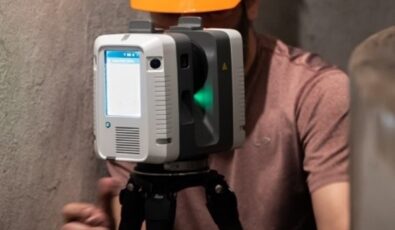
After hundreds of scans and millions of measurable data points are collected, the work on the ground is complete. Next, high-performance computers take the hundreds of scans, and millions of data points, to transform the data into complete three-dimensional images and “fly-thru” renderings – a 3D laser scan which is accurate to less than a millimetre.
The impact of the team’s important work has been far-reaching and has garnered acclaim and recognition from within OPG as well as from industry peers.
Today, all OPG employees and contractors have access to the 3D database, and its use has led to increased collaboration, efficiency, and informed decision-making.
And the future looks bright for even more innovation.
3D scanning’s future at OPG
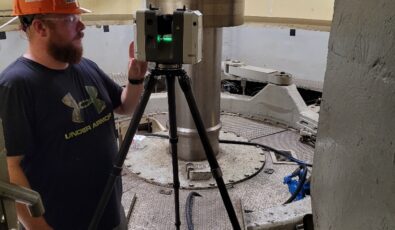
In addition to producing detailed layout drawings and immersive 360-degree videos with their scans, the OPG team is exploring the realm of 4D modeling, which involves creating 3D models that depict equipment installation at different points in time.
The team expects to be busy in the coming years as they capture OPG’s planned Small Modular Reactor fleet at Darlington Nuclear, from its initial construction phases all the way through to service and beyond, and support the potential refurbishment of Pickering Nuclear.
“We’re excited about this technology’s growth in visibility and its future uses,” said Patel. “3D scanning has evolved from a curiosity to now a modern method that will soon be an industry best practice, to help build a brighter future efficiently and sustainably.”
Subscribe and stay informed
Sign up to receive the latest news, project updates, and event information from OPG.


